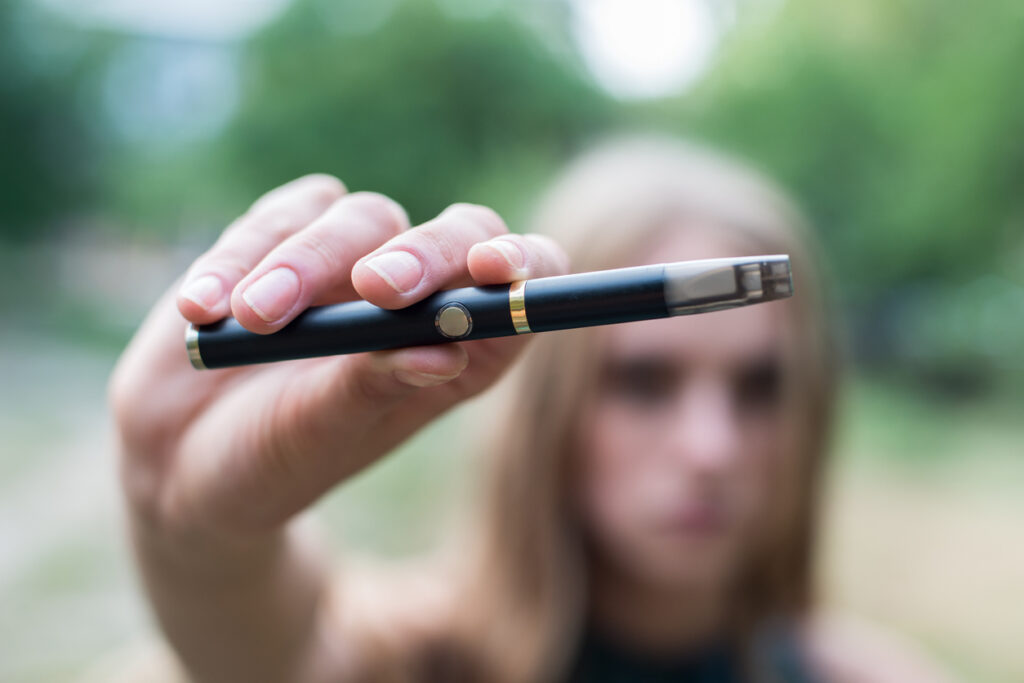In 2013, a group of over twenty researchers began an ambitious project: The Population Assessment of Tobacco and Health (PATH). The goal of the project was to perform a “…longitudinal assessment of patterns of use of a spectrum of tobacco products, including initiation, cessation, relapse, and transitions between products, as well as factors associated with use patterns.”
Supported by the National Institutes of Health (NIH), the National Institute on Drug Abuse (NIDA), and the Food and Drug Administration (FDA), scientists collected data for the study in four waves. Data collection for the Wave One occurred between September 2013 and December 2014. Collection for the subsequent three waves occurring at yearly intervals thereafter. The data collection phase ended with Wave Four in 2017-2018. Researchers spent two years analyzing the data and published their findings in the journal Pediatrics in January 2021.
The paper – “Use of E-cigarettes and Other Tobacco Products and Progression to Daily Cigarette Smoking” – includes data from over 45,000 people age 12 and older. The data we share with you in this article focuses on the transition from the use of tobacco vaping products to the use of tobacco cigarettes among study participants. We pay specific attention paid to the question of whether early experimentation with tobacco vaping products leads to adult cigarette smoking.
What the Study Says
The answer to the question posed in the title of this article is not a simple yes or no. The answer does, however, address a question that concerns many parents, teachers, and pediatricians. That question is a response to a dubious line of reasoning espoused by companies that manufacture and sell vaping products. Their reasoning goes something like this: vaping helps adults quit smoking cigarettes and keeps teens from smoking cigarettes altogether.
From the beginning, parents and adults involved in the lives of teenagers viewed this position with skepticism. While vaping harms the lungs and cardiovascular system less than smoking cigarettes, that’s not the main problem. The active ingredient in tobacco vaping products – nicotine – is one of the most powerful and addictive substances known to modern science. That’s why adults question the claims. Like most people, they wonder, “Does the method matter all that much when the addictive ingredient is identical?”
We’ll leave the question about adults and quitting for another time. Instead, we’ll offer a response to the question about teens by presenting the data from the study.
Here’s what they found.
E-Cigarettes, Cigarettes, and the Transition from Vaping to Smoking
- Almost 67% of youth and young adults reported using at least one tobacco product during the study period.
- Around 33% of youth and young adults reported using more five or more tobacco products during the study period.
- E-cigarettes and regular cigarettes were the most commonly used tobacco products
- Around 12% of respondents reported daily tobacco use.
- Of those, over 67% reported daily cigarette smoking
- Respondents who initiated tobacco use with e-cigarettes (vaping) were three times as likely to progress to daily cigarette smoking
- Respondents under the age of 18 who initiated tobacco use with e-cigarettes were also three times as likely to progress to daily cigarette smoking, compared to those who never used e-cigarettes
The last two bullet points answer the question we pose in the title of this article. It’s not a yes/no answer, but it is persuasive. Teens who vape are three times more likely to transition from vaping to daily cigarette smoking than teens who never vape. That doesn’t mean that teens who vape will become daily smokers. It means they’re more likely to. And it throws a bucket of cold water on claims that vaping among teens prevents teens from smoking cigarettes.
Vaping Tobacco Products is Risky for Teens
This report appears at a time when trends in tobacco use among teenagers show significant divergence. While cigarette smoking among high school seniors decreased from 28 percent to 22 percent between 2016 and 2019, e-cigarette use among high school seniors rose from 39 percent to 46 percent between 2016 and 2019.
The news about the decrease in smoking cigarettes is encouraging. That is, until you realize the data from the PATH study predicts that those high school seniors who reported vaping are three times as likely to transition to smoking cigarettes than their non-vaping peers.
We can’t predict the future. But that prognosis is less than encouraging, with regards to teens who vape and their future tobacco habits. For parents, teachers, pediatricians, and any adult involved in the lives of teenagers, this confirms what most have suspected since the appearance of vaping products a few years ago. Fruity flavors notwithstanding, and despite the fact that vaping causes less damage to the lungs and respiratory system than old-fashioned smoking the data show that teen vaping is a dangerous habit. It’s a habit that can, over time, can lead to more dangerous habits like cigarette smoking.































































